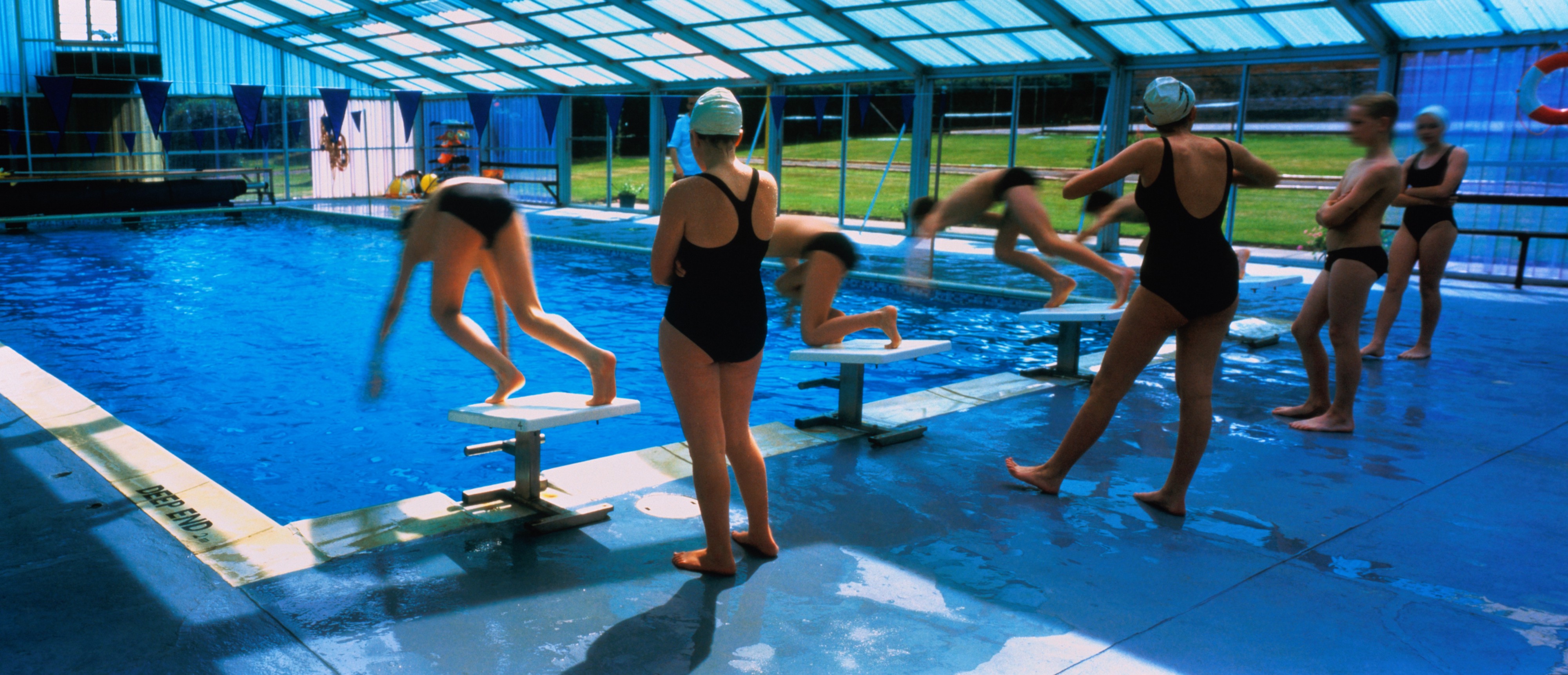A high school swimmer was disqualified because officials were offended by how her swimming suit fit her fuller-figured body
 Photo: David Oliver/Getty Images
Photo: David Oliver/Getty Images
In response to public outcry, the Alaska School Activities Association has reversed its decision. Read the update here.
 Photo courtesy of the author
Photo courtesy of the author
Just look at the modesty standards that guided the referee?s decision on Friday night and compare them to popular brand-name suits worn by other girls throughout the state. Notice the high-cut backs to these suits ? they?re not technically in compliance even before they get on the body of a swimmer, yet many high schools use these brands as their team suits. And though the styles are cut in a way that is considered ?immodest,? why has only one swimmer been disqualified?
These young swimmers aren?t being punished for wearing their suits in scandalous or provocative ways, but rather, because their ample hips, full chests, and dark complexions look different than their willowy, thin, and mostly pallid teammates. Some will argue this scandal has nothing to do with race. But the issue becomes glaring when officials are overheard acknowledging that white athletes are baring too much skin as well, yet they?ve never been disqualified for a similar violation.
It gets much worse for the young high school senior whose victory was stolen from her last week. This same girl was the subject of one rogue team parent?s photography project last season, in which they took graphic photos of her backside in her swimsuit ? without her knowledge or consent ? and circulated the images via email as evidence that her attire is immoral. She is a minor ? that parent should be arrested for possession and distribution of child pornography.
And she?s not alone ? the young swimmer?s sisters are being harassed for how the swimsuits fit their bodies, too. The issue has unraveled so much that parents have been overheard saying that for the sake of their sons, the mother of these young ladies should cover up her daughters.
The obstacles these young teens face has created a culture of tension and fear on pool decks all over the state.
The girl?s younger sister, one of the fastest athletes in the history of Alaska swimming, has told her family and friends she feels as though the community is telling her that her specific body is not appropriate for competitive swimming. It is the most heartbreaking thing to hear from a young person who is fit, healthy, and just trying to ensure a brighter future for herself through this sport. We need to let these girls know that no one can pass judgment on their bodies for any reason. Every organization associated with competitive youth swimming in the state of Alaska and the whole of the United States needs to protect them so they can get their focus back on swimming, which is all they?ve ever wanted to do.
The obstacles these teens face has created a culture of tension and fear on pool decks all over the state. Girls of all shapes, sizes, and races are worrying about their suits like never before. How is anyone supposed to focus on swimming fast when they are confronted with the reality that a subjective rule may result in disqualification? And in a world where young girls are told at every turn that the skin they?re in is not good enough for a thousand reasons, the last thing we need to do in youth athletics is to add to that unhealthy dialogue around body image. One young lady expressed at a meet last season that she felt she needed to go on a restrictive diet and put in more time at the gym so her backside would be smaller and therefore more appropriate by the standards of what is being called ?the modesty rule,? as defined by this small but vocal group of people. If she starves herself, she cannot compete at her highest level; if she does succeed, it?s almost certain that some of her teammates will try to do the same. If this becomes the norm, girls swimming in Alaska will suffer. We cannot allow our organization to become one that engages in body-shaming ? it should promote a healthy body image for all athletes.
Another young athlete who was reprimanded for how her swimming suit fit her body has a long reputation winning races across the state. She holds every record on her local team for girls aged eight and under. Her records represent not only the fastest swimming in that program, but also in the state and country in that age group. My own young daughter looks up to her so much that this girl may as well be a god. Still, she has no idea this young swimmer is at risk of being remembered only as the fast girl who was targeted for her body. I hope this disappears before she is old enough to understand. We need to make a stand so that these girls and others like them may continue to inspire the next generation of female swimmers.
What has been carried out on pool decks in Alaska over the last year is nothing short of racism, sexism, body-shaming, and child abuse. The swimming suits at the heart of the scandal satisfy the requirements as put forth by the National Federation of High School Sports ? the only reason this ever became an issue is because certain people cannot keep their ultra-conservative beliefs to themselves. It is only these girls with their darker skin and unique bodies who have been singled out. The amount of mental and emotional trauma these girls have suffered is inexcusable.
If you do not like the way that swimsuits fit on these girls? bodies then don?t look; they are minors, children, and no one should be looking at them anyway. We cannot take back what has already unfolded but we can make sure it does not happen going forward. Competitive swimming is about building strong character, valuable life skills, bright futures, and lifelong friendships. Let us silence the voices who are taking away from that experience by targeting and abusing children and instead get back to instilling confidence in young people one splash at a time.
A previous version of this piece was first published on Medium.


